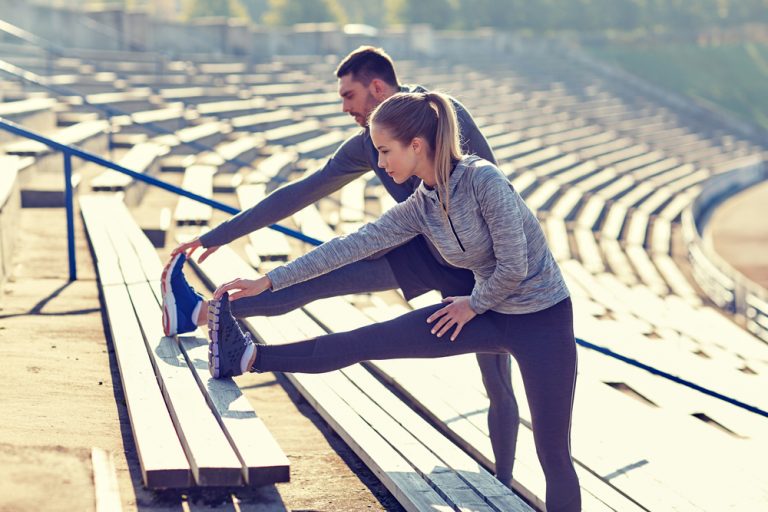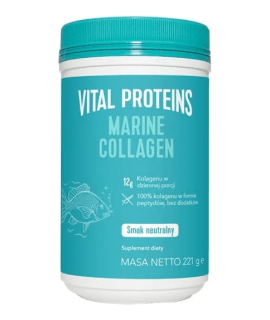Compressive mobilization
Compressive mobilization works primarily in the fight against muscle pain, elimination of the occurrence of muscle fibers being removed, trigger points being released, ensuring the proper strength of muscle contraction and restoring the proper slip between the muscles and the skin.
Its proper use promotes the involvement of deeper layers of connective tissue and muscles. Therefore, this method is perfect for eliminating trigger points that can be responsible for pain even in other parts of the body. Relaxed muscles should be flexible over their entire length. If you hit a hard, touch-sensitive point, you can be sure it's the trigger point. The trigger points, as mentioned above, not only cause pain in this or radiating place, but also limit the range of motion, possibly leading to pathology also within the joints. Thanks to the use of pressure mobilization, we can break up and loosen the tight tissue, restoring its proper functioning. You should use compression mobilization after training and at bedtime.It is not recommended to use this method before training.
You will need a hard ball or a roller to mobilize the pressure. Lie on one of these devices, relaxing the fully massaged muscle. Compression of tense muscles will not bring beneficial results. By creating the maximum pressure by leaning on the instrument with the whole mass of your body, start slowly rolling the area involved. The slower you move, the more effective the mobilization will be, as your muscles will be accustomed to increasing pressure.
Tensioning and loosening
This method works primarily when increasing the range of movement of contorted muscles, restoring the effect of sliding surfaces between the muscles and the skin and in the process of improving the strength of muscle contraction.
The method consists in tightening and loosening the muscle at the moment of its maximal extension or when the muscle pressure is applied to the muscle (for example during the use of pressure mobilization).
During dynamic mobilization, stretch the muscle as much as possible, then in the phase of maximum stretching try to proprioception for 5 seconds, then relax it. After a while, stretch again the maximum muscle (this should already be done in a slightly larger range than at the first attempt) and hold it for 10 seconds. Repeat this procedure in 4-6 series. Remember to breathe deeply, which will promote the oxygenation of tissues.

During the mobilization of sliding surfaces you can also use the method of tensioning and loosening. Look for a trigger point with a ball or roller. Stay at this point, but do not press the whole body on him. Then, tense the muscles of the sore area for at least 5 seconds and then relax them, trying to resist the ball or roller with increasing force. Repeat this procedure several times until you can lean on the ball or roller with your entire body weight.
Use the method of stretching and loosening after training, when the muscles are warmed up. Rather, you should not use this method before training.
The method of compressive compression
This method combines muscle relaxation, elimination of trigger points by splitting of attached fibers and restoration of fascial slip surfaces. Thanks to this method, we can reach deeply localized pathological motor limitations in the muscles.
How to use this method? Find a tense area using a ball, roller or neck. Press on this point with all the mass of your body. Then immobilize the limb at this point, start moving it in the full range of movement in each of the possible directions. Remember to breathe in diaphragm when using this method.
Mobilization with tape
This method works great when mobilizing joint capsules by increasing the space inside them. Thanks to this, we will remove the blockages occurring in the joints. Additionally, thanks to this method, we will increase the range of joint movement and improve muscle dynamics.
Pushing the joint with the tape is one of the most effective methods of dealing with muscle stiffness and incorrect placement of joints caused by a long stay in one position.
Remember that the body adapts to the position in which it often lives. A perfect example is the sitting work that shortens the flexor muscles of the hips and the back of the hip bone instead of staying in the correct, central position. Through the occurrence of both these pathologies, any exercise that requires us to bend deeply in the hip joint (for example, a squat) will cause the hip bone to hit the edge of the acetabulum.
The use of the tape to pull the limb and call the movement starting from the position closing the hip joint will contribute to locating the head of the hip bone in the right place, thus removing the blockage and discomfort in the exercises causing flexion in the hip joint.
Depending on what pond you want to mobilize, you have to choose the right exercises. For the purposes of the article, we will focus on an exemplary exercise that mobilizes the hip front.
Start by wrapping the tape around the upper thigh. Then, take the position as if you were in a slug (the tape was placed on the top of the foot). Push your hips forward. Then do a few side squats, remembering to lower and raise the knee of the leg (which is in the back, i.e. the one with the tape). If doing squats in this position does not cause you any pain or discomfort, it means that you have full range of movement in this joint. If, however, you will not be able to stretch your hip as much as possible or you feel discomfort during the movement - then it means that the joint is somewhat limited.
Methods that mobilize joints using gymnastic tape are great for use before, during training (between series of exercises in which there are pathologies in the area of movement), and also after training. Remember about proper breathing tempo.
Pressure and rotation method
It is a great method to restore the proper sliding surface of the fascia, intensify the circulation in places where it is weak and to break up the taut tissues.
Press the ball with the place you want to work on and immobilize the tissues underneath, start slowly turning the ball in both directions. Work on one place for a minimum of 30 seconds, then look for other places.
Compression method using floss band rubber
A great method to restore the proper functioning of fascial sliding surfaces and more. It allows you to release trigger points, thus increasing the scope of muscle work and strength potential. It is also useful when breaking tissue scarring and cleaning up the swollen, strained joint. Moreover, this method is great in increasing the mobility and mobility of joints, thus contributing to the increase of muscle contraction force.
Compression method is a great, universal method serving not only to mobilize the joint, but also to run all mobilization systems at the same time. Many specialists claim that this is the most effective method of restoring the correct position of the joint and the scope of work not only of the joint but also of the surrounding muscles.
Wrap the floss band around the place you want to work on, causing pressure a few centimeters below and above the place you are engaged. This pressure can not be too weak, but also not too strong, because you will have to endure 2-3 minutes. After squeezing a given joint or muscle, start moving the limb in all possible directions.
You can use the method at any time - before training, after training or at home.
The advantage of the compression method compared, for example, to roller rolling is undoubtedly the fact that you can work on mobilizing exercises in the full range of exercise. For example, if you have some movement limitations when performing squats, try to tie the quadriceps with the tape along its entire length, and then do some sit-ups. Thanks to this you will be able to improve the biomechanics and the way of working of certain tissues or sliding surfaces. The same applies to the work of the knee joint itself. Try to tie the knee with tape and then perform squats with the mass of your own body. This will definitely improve the quality of the joint and tissues around it.
Compression caused by binding a given area with rubber floss band works on so many levels that you can really get rid of ailments without even knowing what caused it. Another extremely important advantage of this method is the fact that after removing the tape, the blood literally floods the compressed area, causing better oxygenation and tissue regeneration.
Remember to stop using the compression method at the moment when you begin to feel numbness, tingling in the limb and notice the bruising or blemish of the skin. Such symptoms usually start after 2 minutes depending on the place and they are associated with a difficult blood supply. After removing the tape, your skin may leave red stripes which are the result of stretching the skin's upper layer. They will disappear after a few minutes.
Stretching the joint
Stretching joints creates additional space in them, which allows to eliminate movement restrictions and increases the range of movement in elbows and knees.
How to easily check if you have any mobility restrictions in your elbows and knees? Try to contact the bicep with the forearm by flexing in the elbow or calf with sciatic muscles by bending in the knee joint. If you can not do it or you feel a lot of resistance - it means that the scope of work of these joints is incorrect.
The easiest way to stretch the pond is to create additional space in it by rolling the towel into a roll and pressing it into the elbow or knee flexion, and then pressing above the fulcrum. In other words, when stretching the shoulder joint, put the rolled towel in the flexion of the joint, and then try to contact the forearm with the biceps. In this position you can stay 45-60 seconds. Do the same with your knee joint. Roll the rolled towel in the flexion of the knee joint, and then sit in the sitting position and try to pull the calf into the sciatic muscles.
Stretching the joint can be done both before and after the workout. If you lack proper mobility during training, then it is best to apply this treatment before training.
Summary
Knowledge of mobilization techniques and their use will certainly have a positive effect on sports results and independent coping with most basic abnormalities in muscles and joints. The most common rolling on the roller before training will allow us to save time, because properly made properly warms us up without the need to use cardiovascular equipment. By the way, it will bring us a number of benefits and will allow you to find trigger points, at the elimination of which we can focus on completing the training.
It is worth implementing them in your training plan, because it will reduce the chances of injury and also allow us to enjoy a fully healthy movement apparatus for many years of our lives.









